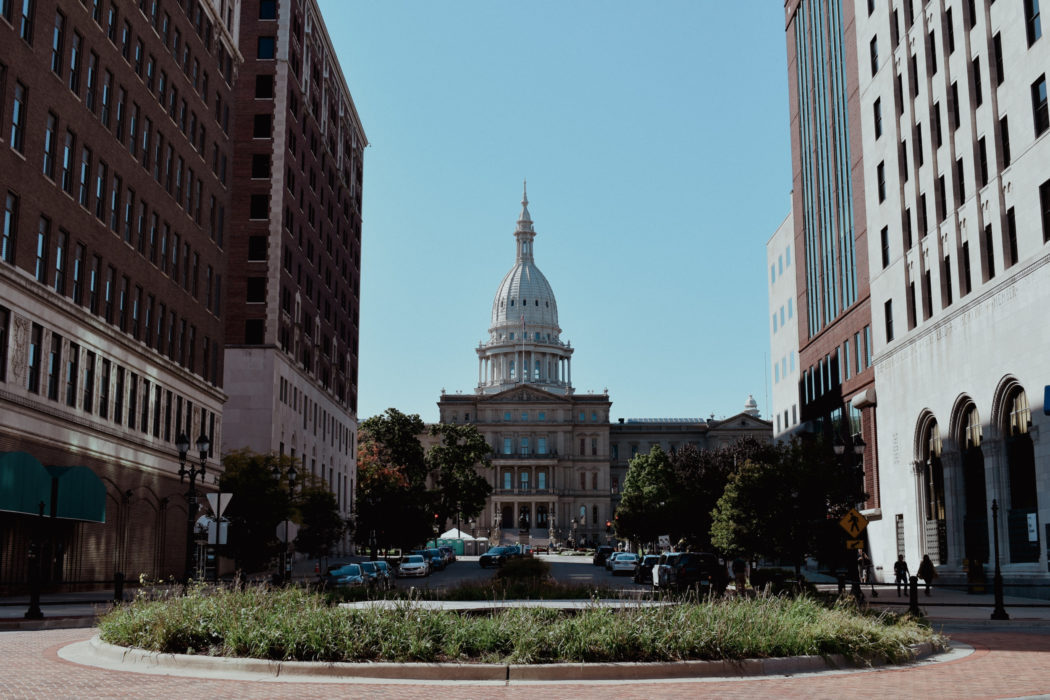
(GRAND LEDGE) – Gov. Gretchen Whitmer ‘s record-breaking $74.1 billion spending plan for Fiscal Year (FY) 2023 recommends spending all of the $14-$15 billion in extra state and federal revenue the state currently has at its disposal on education, infrastructure, health care and other services.
Michigan is supposed to receive $5 to $6 billion from the President’s infrastructure law over a series of years, so Wednesday’s budget doesn’t allocate all of that money.
However, everything on the balance sheet, with some minor exceptions, would go out the door, Budget Director Chris Harkinssaid Wednesday.
Michigan’s largest annual budget proposal in history is heavy on investing into cities, universities and electric vehicles, among other things. It’s light on saving or paying down long-term debt. It’s two tax cuts — the Earned Income Tax Credit expansion and the exempting retirement income from the Income Tax — would cost the state about $400 million a year. Republican lawmakers want to see much more.
The plan is nearly 3% above the roughly $72 billion Michigan government is slated to spend this year. It looks to take advantage of soaring state revenue and a federal government that wants robust consumer spending to prevent a post-COVID economic slump.
More strikingly, it’s a 34.5% jump from just five years ago when the budget was $55 billion. In the lean years between FY ’06 and FY ’13, the state budget was in the $40 billion range.
“It’s time to make investments that are long overdue,” Whitmer said during an afternoon press conference at Grand Ledge High School.
Schools are receiving $2.3 billion in one-time funding. There’s $1.7 billion in federal and state money going into roads, bridges, broadband, pump stations and other infrastructure.
Another $725 million is going into bonuses for “front-line workers,” behavioral health workers and nursing direct care workers. That’s outside the special bonuses for teachers and $50 million for law enforcement and first responders.
“We got here in 2009 with a budget of $48 billion. This is $74 billion. All I got to say is ‘Damn!” interjected Senate Appropriations Committee Chair Jim Stamas (R-Midland) during Wednesday’s budget presentation.
After a couple decades of lean years, universities, colleges and local governments were thrilled to see the Governor propose a 10% state funding increase for them, even if half of it would be one-time spending only. It’s a development MIRS reported Tuesday night.
Only 20% of the Governor’s spending plan comes from the discretionary General Fund (GF), but even at $14.3 billion, it’s well above the $11.7 billion the state set aside for GF last year.
A 41% plurality of the budget proposal is federal spending and 23% is coming out of the School Aid Fund.
“There’s virtually no attention to saving or paying down debt,” said House Appropriations Committee Chair Thomas Albert (R-Lowell) . “What we have here is a good old-fashioned spending spree.”
Democratic lawmakers gushed over the attention to investment in K-12 education and health care after years of budget cutting and disinvestment. Rep. Felicia Brabec (D-Pittsfield) said she remembers navigating years and years of cuts coming down from state government as a Washtenaw County Commissioner. Wednesday’s budget was a welcome change, she said.
“I literally sent the budget to our county administrator and chair of the board to say, ‘Hey, look! I was very, very excited about it,” Brabec said.
Twelve of the state’s 18 departments saw proposed double-digit increases in funding. The Department of Natural Resources is proposed to see a 97% increase. The Department of Military and Veterans Affairs would see 85.2% more.
Quick items of note regarding the budget include:
- Of the $18.4 billion going into K-12 education, $2.3 billion of it (12.5%) is one time funding. She is still using $108.2 million from the General Fund and $15.8 billion is coming from the School Aid Fund (SAF). That’s up about 6% from last year’s $14.86 billion coming from the SAF and 25% more out of the General Fund.
- $500 million for the Strategic Outreach and Attraction Reserve Fund to help lure big companies to make investments in Michigan.
- $325 million for a new psychiatric facility complex for the Hawthorn Center and Walter Reuther Hospital.
- $251.7 million for water infrastructure projects.
- $243.3 million to expand dental care coverage for more than 3 million Medicaid enrollees, a benefit that was taken away during the Great Recession.
- $175 million to create a single statewide case management system to better track and process court cases.
- $115 million to modernize the state’s National Guard armories.
- $10 million to begin transitioning the state’s 7,000 vehicle fleet to electric vehicles.
- $5 million for a new Infrastructure Office to coordinate all the federal money coming in the door and making sure the different levels of government are on the same page.